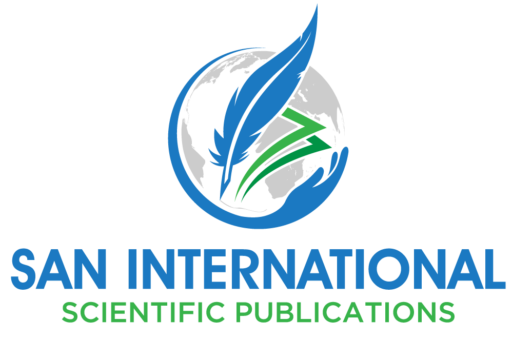Chief Editors: Mr. Irshadullah Asim Mohammed, Dr. Yogesh Mohan Gosavi, and Prof. (Dr.) Vineeta Kaur Saluja
Associate Editor: Mrs. Sruthi S
Co-Editors: Dr. S. Rajeswari, Dr. Nikhil Saini, and Ms. Atreyee Banerjee
ISBN: 978-81-985805-1-1
Chapter: 68
Authors: Rajeshree Makwana, Dr. Rashmika Patel, Amisha Patel, and Urmila Patel
DOI: https://doi.org/10.59646/mrnc68/321
Abstract
Monoclonal antibodies (mAbs) are important reagents used in biomedical research, in diagnosis of diseases, and in treatment of such diseases as infections and cancer. These antibodies are produced by cell lines or clones obtained from animals that have been immunized with the substance that is the subject of study. mAbs are identical in several properties such as protein sequence, antigen-binding site region, binding affinity for their targets, and identical downstream functional effects. These characteristics of mAbs highlight their differences with the polyclonal antibodies which have heterogenous activities and recognize different epitopes on an antigen. Murine mAbs was the first generation of mAbs developed by hybridoma technology however, because of their murine origin, they can trigger the anti-mouse antibody response in the host which could accelerate mAbs clearance and undesirable allergic reactions upon repeated administration. In addition, high specificity and high affinity binding properties of mAbs make them effective biological reagents in immunodiagnostic assays. They can be used in diagnosis of infectious diseases and detection of certain antigens or in serological assessments for detection of antibodies against a certain antigen. This chapter summarizes the general properties of mAbs, their production processes, and their important diagnostic and therapeutic applications.
References
- Castelli MS, McGonigle P, Hornby PJ. The pharmacology and therapeutic applications of monoclonal antibodies. Pharmacol Res Perspect. 2019 Dec;7(6):e00535.
- Shepard HM, Phillips GL, D Thanos C, Feldmann M. Developments in therapy with monoclonal antibodies and related proteins. Clin Med (Lond). 2017 Jun;17(3):220-232.
- Buss NA, Henderson SJ, McFarlane M, Shenton JM, de Haan L. Monoclonal antibody therapeutics: history and future. Curr Opin Pharmacol. 2012 Oct;12(5):615-22.
- Demlova R, Valík D, Obermannova R, ZdraŽilová-Dubská L. The safety of therapeutic monoclonal antibodies: implications for cancer therapy including immuno-checkpoint inhibitors. Physiol Res. 2016 Dec 21;65(Suppl 4):S455-S462.
- Pichler WJ. Adverse side-effects to biological agents. Allergy. 2006 Aug;61(8):912-20.
- Frey NV, Porter DL. Cytokine release syndrome with novel therapeutics for acute lymphoblastic leukemia. Hematology Am Soc Hematol Educ Program. 2016 Dec 02;2016(1):567-572.
- Vergara-Jimenez J, Tricoci P. Safety and efficacy of abciximab as an adjunct to percutaneous coronary intervention. Vasc Health Risk Manag. 2010 Mar 03;6:39-45.
- Krishnamurthy A, Jimeno A. Bispecific antibodies for cancer therapy: A review. Pharmacol Ther. 2018 May;185:122-134.
- Shim H. Bispecific Antibodies and Antibody-Drug Conjugates for Cancer Therapy: Technological Considerations. Biomolecules. 2020 Feb 26;10(3)
- Labrijn AF, Janmaat ML, Reichert JM, Parren PWHI. Bispecific antibodies: a mechanistic review of the pipeline. Nat Rev Drug Discov. 2019 Aug;18(8):585-608.
- Elgundi Z, Reslan M, Cruz E, Sifniotis V, Kayser V. The state-of-play and future of antibody therapeutics. Adv Drug Deliv Rev. 2017 Dec 01;122:2-19.
- Wiley K, LeFebvre KB, Wall L, Baldwin-Medsker A, Nguyen K, Marsh L, Baniewicz D. Immunotherapy Administration: Oncology Nursing Society Recommendations . Clin J Oncol Nurs. 2017 Apr 01;21(2 Suppl):5-7.
- Posner J, Barrington P, Brier T, Datta-Mannan A. Monoclonal Antibodies: Past, Present and Future. Handb Exp Pharmacol. 2019;260:81-141.
- Bayer V. An Overview of Monoclonal Antibodies. Semin Oncol Nurs. 2019 Oct;35(5):150927.
- Tiller KE, Tessier PM. Advances in Antibody Design. Annu Rev Biomed Eng. 2015;17:191-216.

